NCERT Class 11 Biology Chapter 4 Notes Animal Kingdom- Download PDF Notes
Have you ever tried to figure out why animals are put into different groups? The NCERT Class 11 Biology Chapter 4 Notes Animal Kingdom explains the basis of animal classification, including symmetry, germ layers, coelom, and other body features. These notes include important points, labelled diagrams, and selected previous-year questions to help students understand the pattern of questions and perform well. Students can use these NCERT Notes to quickly revise the topics before exams.
This Story also Contains
- NCERT Class 11 Biology Chapter 4 Animal Kingdom Notes: Download PDF
- Class 11 Biology Chapter 4 Animal Kingdom Notes
- Animal Kingdom Previous Year Question and Answers
- How to Use Animal Kingdom Class 11 Notes Effectively?
- Advantages of Class 11 Biology Chapter 4 Animal Kingdom Notes
- NCERT Class 11 Notes Biology Chapter-Wise
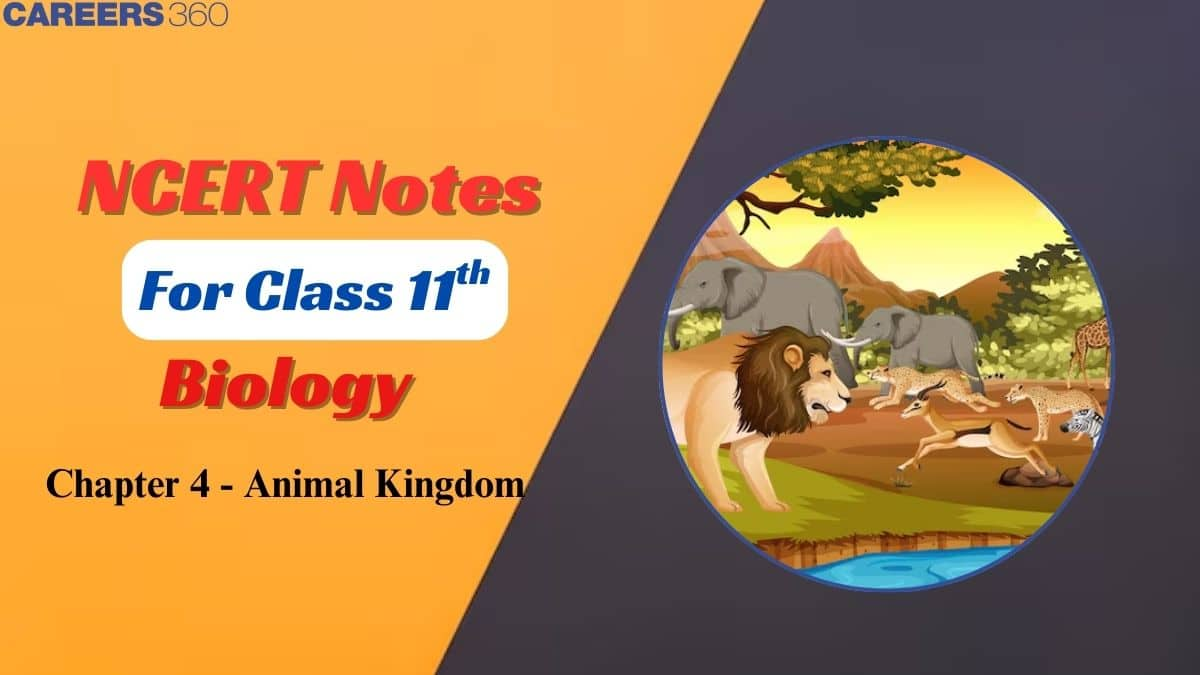
In the NCERT Class 11 Biology Chapter 4 Notes, learners will see short, organised explanations about various animal phyla along with characteristics and examples. Students can also learn how to write more accurate answers in exams using diagrams. Each topic is arranged step by step in a proper sequence with highlights for easier memory retention. By following the NCERT Notes for Class 11, students can build a base for understanding more advanced topics.
NCERT Class 11 Biology Chapter 4 Animal Kingdom Notes: Download PDF
Animals are grouped into different categories based on their body structure, level of organisation, and body cavity. They are classified into phyla like Porifera, Cnidaria, and Arthropoda, which are covered in this chapter. For quick and effective revision, students can download the PDF of Animal Kingdom Class 11 Notes. Having NCERT Notes for Class 11 Biology saves a lot of time during exams.
Related Links to Chapter Animal Kingdom
Class 11 Biology Chapter 4 Animal Kingdom Notes
All the notes are presented in a step-by-step manner, so that students don't get confused. Regular revision of the Animal Kingdom Class 11 Notes is important for academic success and for appreciating the features of the animal world. The notes are prepared according to the latest NCERT curriculum and cover the key features, examples, and differences among major animal phyla.
Basis of Classification
Despite changes in structure and shape, there are essential features shared by all animals in terms of cell arrangement, body symmetry, coelom type, and patterns of digestive, circulatory, or reproductive systems. These features are used as the basis of animal classification.
Levels of Organisation
Even though all members of Animalia are multicelled, they do not all have the same cell organisation pattern. Cells in sponges, for example, are grouped as loose cell aggregates, indicating that they have a cellular level of organisation. Among the cells, there is some division of labour (activities). The cell arrangement in coelenterates is more complicated. The cells that perform the same function are grouped into tissues, which is referred to as the tissue level of organisation.
Members of Platyhelminthes and other higher phyla exhibit a higher degree of organisation, i.e., organ level, in which tissues are gathered together to form organs, each specialised for a certain function. Organs in animals such as Annelids, Arthropods, Molluscs, Echinoderms, and Chordates have become associated with forming functional systems, each of which is concerned with a distinct physiological role. This arrangement is known as an organ system level organisation.
Symmetry
Animals can be classified based on their symmetry. Sponges are generally asymmetrical, which means that no plane that runs through the centre divides them into equal halves. Radial symmetry arises when any plane passing through the body's central axis divides it into two identical halves. This is the body plan of coelenterates, ctenophores, and echinoderms. Animals with bilateral symmetry include annelids, arthropods, and others whose bodies may be divided into identical left and right halves in just one plane.
Diploblastic and Triploblastic Organisation
Diploblastic animals, such as coelenterates, have cells arranged in two embryonic layers, an external ectoderm and an internal endoderm. The mesoglea is an undifferentiated layer that exists between the ectoderm and the endoderm. Triploblastic animals are those in which the growing embryo has a third germinal layer, mesoderm, between the ectoderm and endoderm.
Coelom
In organism classification, the presence or absence of a cavity between the body wall and the gut wall is important. The coelom refers to the body cavity lined by mesoderm. Coelomates are animals that have a coelom, such as annelids, molluscs, arthropods, echinoderms, hemichordates, and chordates. In some species, the body cavity is not lined by mesoderm, but rather, the mesoderm is present as dispersed pouches in between the ectoderm and endoderm. Such a bodily cavity is known as a pseudocoelom, and the creatures that have it are known as pseudocoelomates, such as aschelminthes. Acoelomates are animals that do not have a body cavity, such as platyhelminthes.
Segmentation
In certain species, the body is split into segments both externally and internally, with at least some organs repeated serially. The body of an earthworm, for example, has this pattern known as metameric segmentation, and the phenomenon is known as metamerism.
Notochord
The notochord is a mesodermally derived rod-like structure that emerges on the dorsal side in some animals during embryonic development. Chordates are creatures that have a notochord, while non-chordates are animals that do not have one, such as porifera and echinoderms.
Classification of Animals
The figure below depicts the broad categorisation of Animalia based on the common fundamental features stated in the preceding sections.
Phylum – Porifera
Sponge-like organisms are members of this phylum. They are mostly asymmetrical and live in the sea. These are primitive multicellular animals with cellular organisation. Sponges have a canal system for transportation. Water enters the body wall through minute pores (ostia) into a central cavity, the spongocoel, from which it exits through the osculum.
This water transport pathway aids in food gathering, respiratory exchange, and waste removal. Choanocytes, also known as collar cells, line the spongocoel and canals. Digestion occurs intracellularly. A skeleton made of spicules or spongin fibres supports the body. Sexes are not separate (hermaphrodite), which means that the same individual produces both eggs and sperm.
Sponges reproduce asexually through fragmentation and sexually through gamete formation. Internal fertilisation occurs, and development is indirect, with a larval stage that is morphologically distinct from the adult.
Sycon (Scypha), Spongilla (Freshwater Sponge), and Euspongia (Bath Sponge) are a few examples.
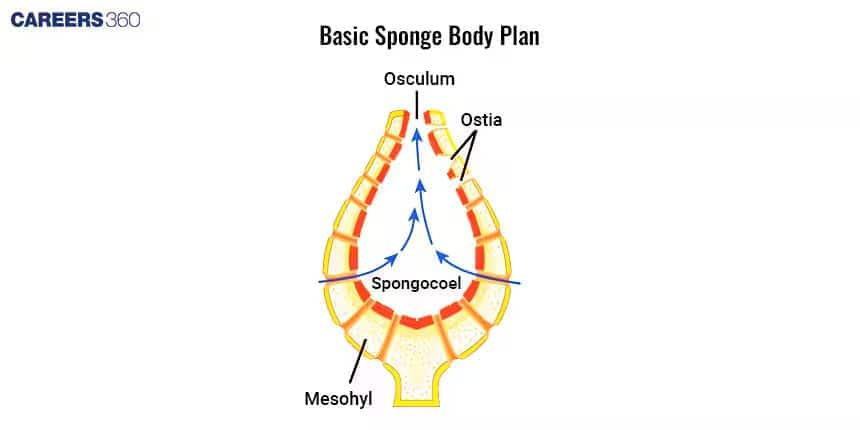
Phylum – Coelenterata (Cnidaria)
They are radially symmetrical, aquatic, mostly marine, sessile or free-swimming animals. The name cnidaria is derived from the presence of cnidoblasts or cnidocytes on the tentacles and body. Cnidoblasts are employed for prey capture, defence, and anchoring. Cnidarians are diploblastic and have a tissue level of organisation. They have a single opening in the centre of their gastro-vascular cavity and their mouth is a hypostome. Digestion occurs both extracellularly and intracellularly. Some cnidarians, such as corals, have a skeleton made of calcium carbonate. Cnidarians have two basic body forms: polyp and medusa.
The former, like Hydra, Adamsia, and others, are sessile and cylindrical, whereas the latter is umbrella-shaped and free-swimming, like Aurelia or jellyfish. Those cnidarians that exist in both forms display generational alternation (Metagenesis), which means that polyps create medusae asexually and medusae produce polyps sexually (e.g., Obelia). Physalia (Portuguese man-of-war), Adamsia (Sea anemone), Pennatula (sea pen), Gorgonia (sea fan), and Meandrina (Brain coral) are some examples.
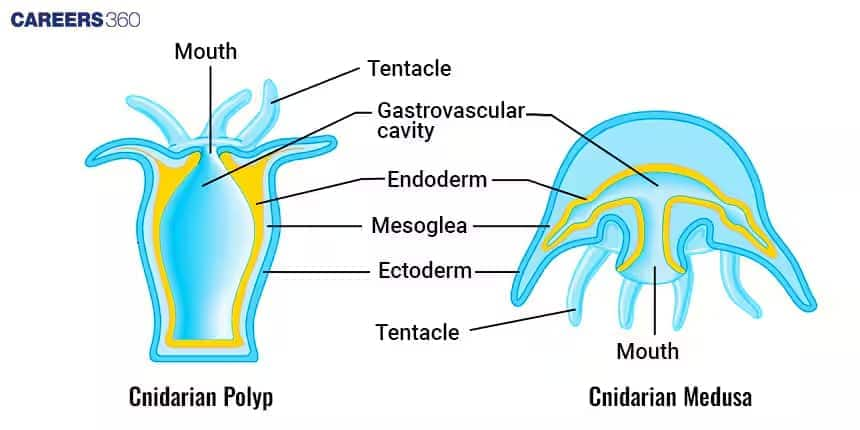
Phylum – Ctenophora
Ctenophores, often known as comb jellies or sea walnuts, are radially symmetrical, diploblastic animals with tissue-level organisation and are entirely marine. On the outside of the body are eight rows of ciliated comb plates that aid in movement. Extracellular and intracellular digestion are both involved in digestion. Ctenophores have a lot of bioluminescence (the ability of a living creature to emit light). The sexes are not divided. Sexual reproduction is the only way to reproduce. Fertilisation is done externally with indirect development. Pleurobrachia and Ctenoplana are some examples.
Phylum – Platyhelminthes
Flatworms get their name from the fact that their bodies are flattened dorso-ventrally. These are mostly endoparasites that can be found in animals, including humans. Flatworms are animals with an organ-level organisation that is bilaterally symmetrical, triploblastic, and acoelomate. In the parasitic forms, hooks and suckers are present. Some of them directly absorb nutrients from the host via their body surface. Flame cells are specialised cells that aid in osmoregulation and excretion. The sexes are not distinct. Internal fertilisation occurs, and development takes place through several larval stages.
Taenia (Tapeworm), and Fasciola (Liver fluke) are some examples.
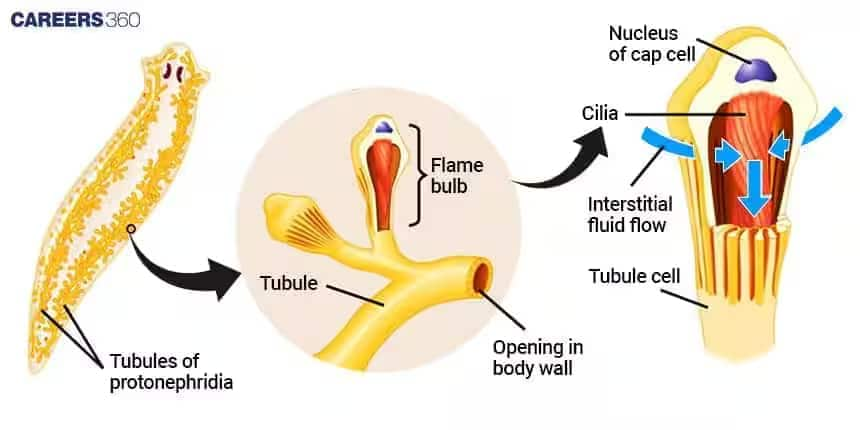
Phylum – Aschelminthes
The aschelminthes' body is circular in cross-section, thus the name roundworms. They might be free-living, aquatic, or terrestrial, or they can be parasitic in plants and animals. The body organisation of roundworms is at the organ-system level. With a well-developed muscular pharynx, the alimentary canal is completed. Through the excretory pores, an excretory tube removes waste from the body cavity. Sexes are distinct (dioecious), i.e., males and females exist separately. Females are frequently longer than males. Internal fertilisation occurs, and development can be direct (the young resemble the adult) or indirect. Example: Ascaris (Roundworm), Wuchereria (Filaria worm), and Ancylostoma (Hookworm).
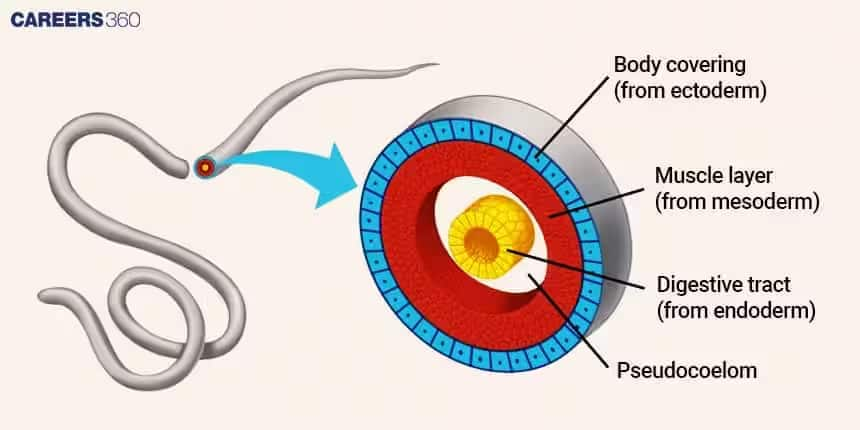
Phylum – Annelida
They can be aquatic (both marine and freshwater) or terrestrial, free-living or parasitic. They have an organ-system level of body organisation as well as bilateral symmetry. They are coelomate, triploblastic, and metamerically segmented animals. Their body surface is divided into segments or metameres, giving rise to the phylum name Annelida (Latin, annulus: little ring). They have both longitudinal and circular muscles that aid in locomotion. Aquatic annelids, such as Nereis, have lateral appendages called parapodia that aid in swimming. There is a closed circulatory system set up. Nephridia (also known as nephridium) aid in osmoregulation and excretion.
The neural system is made up of paired ganglia (sing. ganglion) that are linked by lateral nerves to a double ventral nerve cord. Earthworms and leeches are monoecious, whereas Nereis, an aquatic form, is dioecious. Reproduction is a sexual process.
Nereis, Pheretima (Earthworm), and Hirudinaria (Blood sucking leech) are some examples.
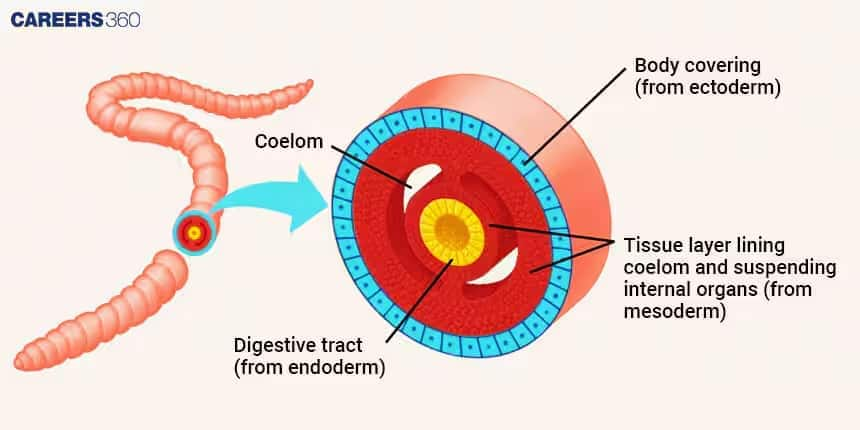
Phylum - Arthropoda
Arthropoda is the largest group of animals, including insects, and makes up about two-thirds of all named species on Earth. They have a well-developed organ system, and their body is bilaterally symmetrical, triploblastic, segmented, and coelomate. The body is covered with a hard outer layer called a chitinous exoskeleton and is divided into three parts: head, thorax, and abdomen. Arthropods have jointed legs and breathe through gills, book gills, book lungs, or a tracheal system. Their circulatory system is of the open type. They possess sense organs such as antennae, eyes, and balancing organs. Wastes are removed by Malpighian tubules. Arthropods are usually dioecious (separate sexes), with internal fertilisation, and they mostly lay eggs. Their development may be direct or indirect.
Some important examples include useful insects like the honey bee (Apis), silkworm (Bombyx), and lac insect (Laccifer); mosquitoes like Anopheles, Culex, and Aedes, which act as disease carriers; Locusta (locust) as a serious pest; and Limulus (king crab), which is known as a living fossil.
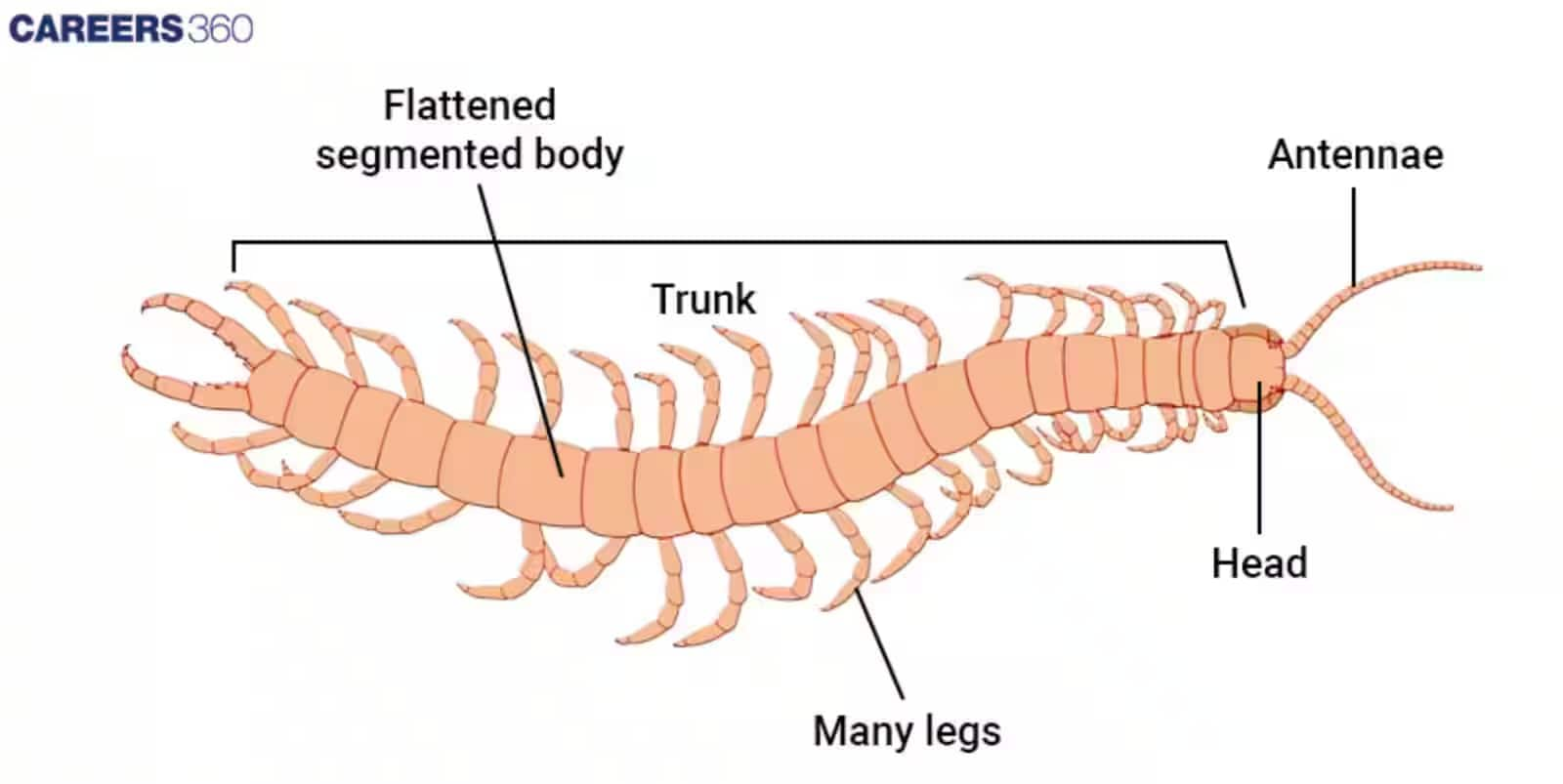
Phylum – Mollusca
This is the second most populous animal phylum. Molluscs are either terrestrial or aquatic (marine or freshwater) organisms with organ-system-level organisation. They are triploblastic, coelomate animals with bilateral symmetry. The body is unsegmented and covered by a calcareous shell, with a distinct head, muscular foot, and visceral hump. A soft and spongy layer of skin creates a mantle over the visceral hump.
The mantle cavity, which contains feather-like gills, is located between the hump and the mantle. They can breathe and expel waste. Sensory tentacles can be found in the anterior head region. The radula is a file-like rasping organ found in the mouth that is used for feeding.
Pila (Apple snail), Pinctada (Pearl oyster), Sepia (Cuttlefish), Loligo (Squid), Octopus (Devilfish), Aplysia (Sea hare), Dentalium (Tusk shell), and Chaetopleura (Chiton).
Phylum – Echinodermata
The name Echinodermata comes from the fact that these animals have an endoskeleton made up of calcareous ossicles. All are marine and organised at the organ-system level. The name Echinodermata comes from the fact that these animals have an endoskeleton made up of calcareous ossicles. All are marine and organised at the organ-system level. Adult echinoderms are radially symmetrical, whereas larval echinoderms are bilaterally symmetrical. They are coelomate and triploblastic animals. With the mouth on the lower (ventral) side and the terminal opening of the digestive tract on the upper (dorsal) side, the digestive system is complete.
The presence of a water vascular system in echinoderms aids in locomotion, food capture and transport, and respiration. An excretory system is not present. Sexes are distinct. The mode of reproduction is sexual. Fertilisation is usually done externally. Asterias (Starfish), Echinus (Sea urchin), Antedon (Sea lily), Cucumaria (Sea cucumber), and Ophiura (Brittle star).
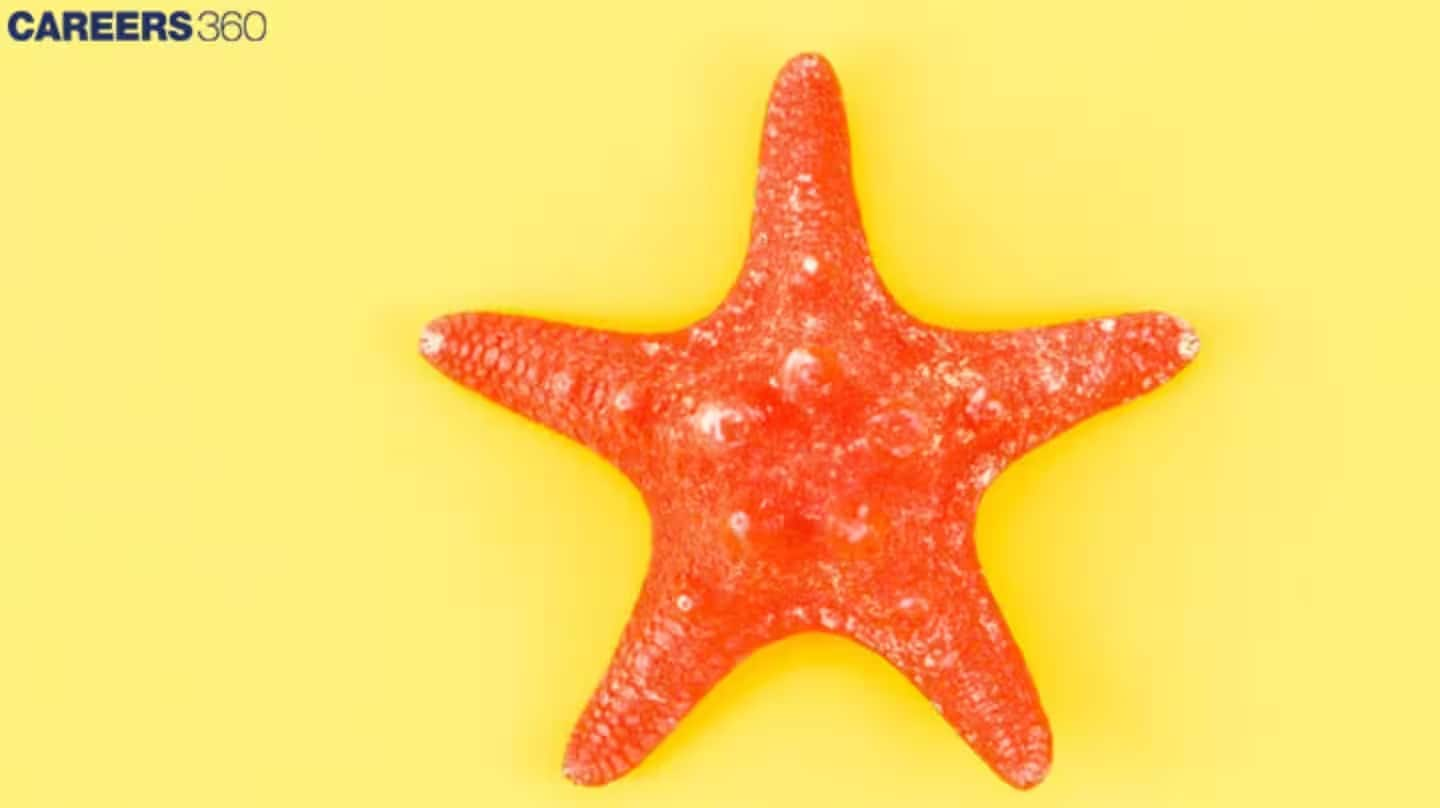
Phylum – Hemichordata
Hemichordates have a basic structure in the collar region termed the stomochord, which is analogous to the notochord. This phylum is made up of a tiny group of worm-like marine organisms that are organised on an organ-system level. They are bilaterally symmetrical, triploblastic, and coelomate creatures. The body is cylindrical and consists of an anterior proboscis, a collar, and a lengthy trunk.
The circulatory system is of the open kind. The gills are responsible for respiration. The excretory organ is the proboscis gland. Sexes are distinct. The mode of fertilisation is external. Development occurs indirectly.
Balanoglossus and Saccoglossus are examples of hemichordates.
Phylum – Chordata
A notochord, a dorsal hollow nerve cord, and paired pharyngeal gill slits distinguish Chordata animals. These are bilaterally symmetrical, triploblastic, and coelomate organ-system cells. They have a postanal tail and a closed circulatory system.
Classification of Phylum Chordata
Urochordata or Tunicata, Cephalochordata, and Vertebrata are the three subphyla of the phylum Chordata. Both the subphyla Urochordata and Cephalochordata are marine and are frequently referred to as protochordates. The notochord is only present in the larval tail of Urochordata, whereas it extends from the head to the tail region in Cephalochordata and is present throughout their lives.
During the embryonic period, members of the subphylum Vertebrata have a notochord. In adults, the notochord is replaced by a cartilaginous or bony vertebral column. As a result, all vertebrates are chordates, but not all chordates are vertebrates. Vertebrates contain a two-, three-, or four-chambered ventral muscular heart, kidneys for excretion and osmoregulation, and paired appendages that can be fins or limbs, in addition to the fundamental chordate traits.
Classification of Subphylum Vertebrata
The different classes of vertebrates are described in detail below:
Class – Cyclostomata
Members of the class Cyclostomata who are still alive are parasitic ectoparasites on some fish. They have an elongated body with 6-15 pairs of gill slits that allow them to breathe. Cyclostomes have a sucking mouth and no jaws. Scales are missing from their bodies, and their fins are paired. The cranium and vertebral column are made up of cartilage. The circulation system is closed.
Cyclostomes are marine creatures that migrate to freshwater for spawning. They die a few days after spawning. After metamorphosis, their larvae return to the ocean.
Examples are Petromyzon (Lamprey) and Myxine (Hagfish).
Class – Chondrichthyes
They are streamlined marine animals with a cartilaginous endoskeleton. The mouth is located ventrally. The notochord remains constant throughout life. Gill slits are distinct and lack an operculum (gill cover). The skin is tough and covered in small placoid scales. Teeth are modified placoid scales that are oriented backward. Their jaws are extremely powerful. These creatures are predators. Because they lack an air bladder, they must swim constantly to avoid sinking.
The heart is divided into two chambers (one atrium and one ventricle). They are cold-blooded creatures (poikilotherms), i.e. they can’t control their body temperature. Sexes are distinct. Males have claspers on their pelvic fins. Their mode of fertilisation is internal, and most of them are viviparous.
Examples are Scoliodon (Dogfish), Pristis (Sawfish), Carcharodon (Great white shark), Trygon (Stingray).
Class – Osteichthyes
It includes both freshwater and marine fish with a bony endoskeleton. Their physique is streamlined. The mouth is primarily terminal (Figure 4.20). They have four pairs of gills on each side, which are covered by an operculum. Cycloid/ctenoid scales cover the skin. There is an air bladder present that regulates buoyancy. The heart is divided into two chambers (one atrium and one ventricle). They are cold-blooded creatures. The sexes are distinct. Fertilisation is typically done externally. They are generally oviparous and have direct development.
Marine examples are Exocoetus (Flying fish) and Hippocampus (Seahorse).
Freshwater examples include Labeo (Rohu), Catla, and Clarias (Magur).
Aquarium examples are Betta (Fighting fish) and Pterophyllum (Angel fish).
Class – Amphibians
Amphibians can live in both aquatic and terrestrial environments. The majority of them have 2 pairs of limbs. The body is divided into two parts: the head and the trunk. Some creatures may have a tail. The amphibian's skin is wet (without scales). Eyelids are present in the eyes. A tympanum is a representation of the ear. The alimentary canal, urinary tract, and reproductive tract all connect to a common chamber called the cloaca, which opens to the outside. Respiration is done via the gills, lungs, and skin.
The heart is made up of three chambers (two atria and one ventricle). These are cold-blooded creatures. The sexes are distinct. Fertilisation is done externally. They are oviparous and develop indirectly. Examples are Bufo (Toad), Rana (Frog), Hyla (Tree frog), Salamandra (Salamander), and Ichthyophis (Limbless amphibian).
Class – Reptilia
They are usually terrestrial animals with dry and cornified skin, epidermal scales, or scutes covering their bodies. They have no external ear holes. A tympanum is a representation of the ear. When limbs are present, they are in two pairs. The heart is generally three-chambered, but crocodiles have a four-chambered heart. Poikilotherms are reptiles. Lizards and snakes shed their scales in the form of a skin cast. The sexes are distinct. Internal fertilisation occurs. They are oviparous and develop directly.
Examples are Chelone (Turtle), Testudo (Tortoise), Chameleon (Tree lizard), Calotes (Garden lizard), Crocodilus (Crocodile), and Alligator (Alligator). Hemidactylus (Wall lizard).
Poisonous snakes such as Naja (Cobra), Bangarus (Krait), and Vipera (Viper) are also included in reptiles.
Class – Aves
The presence of feathers distinguishes Aves (birds), and most of them can fly, except flightless birds (e.g., Ostrich). They have a beak. The forelimbs have been transformed into wings. Scales cover the hind limbs, which are modified for walking, swimming, and grasping tree branches. Except for an oil gland at the base of the tail, the skin is dry and gland-free. The long bones are hollow with air cavities (pneumatic), and the endoskeleton is entirely ossified (bony). The crop and gizzard are extra chambers in the digestive tract of birds. The heart has four chambers.
They are warm-blooded (homoiothermic) animals, which means they can keep their body temperature constant. The lungs are responsible for respiration. Respiration is supplemented by air sacs connected to the lungs. The sexes are distinct. Internal fertilisation occurs. They are oviparous, and development is instant.
Examples are Corvus (Crow), Columba (Pigeon), Psittacula (Parrot), Struthio (Ostrich), Pavo (Peacock), Aptenodytes (Penguin), and Neophron (Vulture).
Class – Mammalia
They can be found in a wide range of environments, including arctic ice caps, deserts, mountains, woods, grasslands, and subterranean caves. Some of them have developed the ability to fly or live in water. The existence of milk-producing glands in mammals (mammary glands) that nourish the young is the most distinctive mammalian feature. They have two pairs of limbs that allow them to walk, run, climb, burrow, swim, or fly. Mammalian skin is remarkable in that it has hair. There are external ears called pinnae. The jaw has many types of teeth. The heart has four chambers.
These creatures are homoiothermic. The lungs are responsible for respiration. Sexes are separate, and fertilisation is done internally. With a few exceptions, they are viviparous, and the manner of development is direct.
Examples are Oviparous-Ornithorhynchus (Platypus); Viviparous - Macropus (Kangaroo), Pteropus (Flying fox), Camelus (Camel), Macaca (Monkey), Rattus (Rat), Canis (Dog), Felis (Cat), Elephas (Elephant), Equus (Horse), Delphinus (Common dolphin), Balaenoptera (Blue whale), Panthera tigris (Tiger), Panthera leo (Lion).
Also, Read
Animal Kingdom Previous Year Question and Answers
Some of the questions that have come up in past years from the chapter are given below. Going through the NCERT Class 11 Biology Chapter 4 Notes makes it easier to recall points during preparation.
Question 1. The body cavity is the cavity present between the body wall and the gut wall. In some animals, the body cavity is not lined by mesoderm. Such animals are called
Option 1. Acoelomates
Option 2. Pseudocoelomates
Option 3. Coelomates
Option 4. Haemo Coelomates
Answer :
Animals classified as pseudocoelomates have a fluid-filled bodily cavity known as a pseudocoelom that is not entirely lined by mesoderm tissue. The body cavity, the pseudocoelom, which divides the gut from the body wall, is situated between the mesoderm and the endoderm.
Mesoderm: Between the ectoderm and endoderm, there are sporadic pockets of mesoderm.
Hence, the correct answer is option (2) Pseudocoelomates.
Question 2. Which of the following pairs of animals has non-glandular skin?
Option 1. Snake and Frog
Option 2. Chameleon and Turtle
Option 3. Frog and Pigeon
Option 4. Crocodile and Tiger
Answer :
Non-glandular skin is skin that does not have glands. This type of skin is mostly found in reptiles and birds. Chameleons and turtles belong to the Reptilia class; they possess dry and non-glandular skin with scales. Frogs, pigeons, and tigers have modifications in their skin according to their particular habitats. Therefore, non-glandular skin is found in chameleons and turtles.
Hence, the correct answer is option (2), Chameleon and Turtle.
Question 3. Which one of the following is oviparous?
Option 1. Platypus
Option 2. Flying fox (Bat)
Option 3. Elephant
Option 4. Whale
Answer :
Animals that reproduce by laying eggs and have their offspring develop outside of their mother's body are referred to be oviparous. Usually, the fertilised egg has a yolk that feeds the growing embryo until it hatches. The platypus is a primitive mammal that shows many characteristics of their reptilian descent, such as oviparity. This means that these lay eggs. Rest all three animals,i.e., flying fox, elephant, and whale, are viviparous mammals and give birth to young ones.
Hence, the correct answer is option (1), Platypus.
Question 4. The unique mammalian characteristics are:
Option 1. Hairs, tympanic membrane, and mammary glands
Option 2. Hairs, pinna, and mammary glands
Option 3. Hairs, pinna, and indirect development
Option 4. Pinna, monocondylic skull, and mammary glands
Answer :
Hairs: Mammals are characterized by the presence of hairs or fur on their bodies. Hairs serve various functions, such as insulation, protection, and sensory perception.
Pinna: The pinna refers to the external, visible part of the mammalian ear. It is a characteristic feature of mammals and helps in collecting sound waves and directing them into the ear canal.
Mammary glands: Mammary glands are unique to mammals and are responsible for producing milk to nourish the young. They are specialized glands that undergo development and enlargement during pregnancy and lactation.
Hence, the correct answer is option (2), Hairs, pinna, and mammary glands.
Question 5. Radial symmetry is NOT found in adults of the phylum.
Option 1. Ctenophora
Option 2. Hemichordata
Option 3. Coelenterata
Option 4. Echinodermata
Answer :
Radial symmetry is not found in adults of the phylum Hemichordata. Hemichordates, which include organisms like acorn worms, exhibit bilateral symmetry as adults. Radial symmetry is commonly observed in organisms such as cnidarians (formerly referred to as Coelenterata) like jellyfish and corals, as well as in echinoderms such as starfish and sea urchins. Ctenophora, or comb jellies, also exhibit radial symmetry as adults.
Hence, the correct answer is option (2), Hemichordata.
Also Read:
How to Use Animal Kingdom Class 11 Notes Effectively?
Studying the Animal Kingdom can be complex due to the diversity of species and their characteristics. Given below are a few ways by which students can make the most use of these notes to perform well in the exam.
Begin by revising the major phyla and classes of animals, focusing on body symmetry, coelom, segmentation, and levels of organization.
Use Class 11 Biology Chapter 4 Animal Kingdom Notes to understand the features of animal groups, such as Porifera, Cnidaria, Annelida, Arthropoda, Mollusca, and Chordata.
Practice diagrams of representative organisms and life cycles to improve visual learning and conceptual clarity.
Refer to Class 11 Biology Chapter 4 Animal Kingdom Notes PDF while solving previous-year questions to quickly recall concepts.
Revise special adaptations in different animal groups, such as parasitism, metamorphosis, and coelom modifications.
Advantages of Class 11 Biology Chapter 4 Animal Kingdom Notes
Students will easily understand the diversity of animals through well-organised notes. The notes simplify the classification and characteristics of the phylum.
- Class 11 Biology Chapter 4 Animal Kingdom Notes PDF provides a concise summary of all the animal phyla, along with their characteristics.
- To explain body organisation and symmetry, the notes include flow charts and clear diagrams.
- All the important examples, their features, and the differences of each group are highlighted, which allows students to retain the concepts for a longer time.
- The notes make complex topics easy, like coelom types, segmentation, and germ layers, for better understanding and to perform well in school and competitive exams like NEET.
NCERT Class 11 Notes Biology Chapter-Wise
The following section contains notes for every chapter of Class 11 Biology. With clear explanations and diagrams, these notes are useful for both school exams and competitive exam preparation.
Frequently Asked Questions (FAQs)
The following are some of the most important topics covered in the NCERT Class 11 Biology Chapter 4 Notes Animal Kingdom.
Basis of classification
Classification of animals.
According to the NCERT Class 11 Biology Chapter 4 Notes Animal Kingdom
Levels of organization
Symmetry
Body cavity
Segmentation
Digestive system
Circulatory system
Respiratory system
Radial symmetry arises when any plane passing through the body's central axis divides it into two identical halves. This is the body plan of coelenterates, ctenophores and echinoderms.
The existence of milk producing glands that nourish the young is the most distinctive mammalian feature of class mammalia. Such milk producing glands are called mammary glands. They are also present in males but are non-functional.
The coelom refers to the body cavity lined by mesoderm. Coelomates are animals that have a coelom, such as annelids, mollusks, arthropods, echinoderms, hemichordates, and chordates.
Classification in biology is significant because it organizes the vast diversity of life, facilitates study and understanding of organisms, helps predict characteristics of groups, and reveals evolutionary relationships.
The notochord plays a crucial role in chordates, serving as a primary structural support and a signaling center during development. It provides a flexible, rod-like structure for support and is present in some adult chordates and all embryonic chordates
Courses After 12th
Applications for Admissions are open.
As per latest syllabus. Physics formulas, equations, & laws of class 11 & 12th chapters
JEE Main Important Chemistry formulas
Get nowAs per latest syllabus. Chemistry formulas, equations, & laws of class 11 & 12th chapters
JEE Main high scoring chapters and topics
Get nowAs per latest 2024 syllabus. Study 40% syllabus and score upto 100% marks in JEE
JEE Main Important Mathematics Formulas
Get nowAs per latest syllabus. Maths formulas, equations, & theorems of class 11 & 12th chapters
